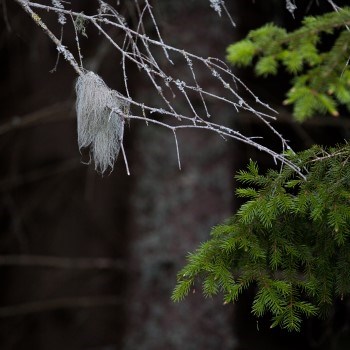Fakta:
Project period:
Project leader:
Ing-Marie Gren
Project co-workers:
Franklin Amuakwa-Mensah
Project funding:
Formas

The role of biodiversity in the stability, function and resilience of forest ecosystems is heavily debated and relationships between different parameters remain unclear. This interdisciplinary project integrates mycology, natural resource economics and forestry in order to evaluate interactions between fungal diversity and forest management and aims to provide i) general models of such relationships and ii) management and policy recommendations accounting for several biodiversity values.
This project aims to establish relationships between forest management, fungal diversity and the ecosystem services of timber production and carbon sequestration. We propose a combined approach to shed light on the biological consequences of forestry, downstream effects on provision of goods and biodiversity, and the societal evaluation of these services. Production and biodiversity aspects of forestry have usually been evaluated separately. By bridging the disciplines of molecular mycology, forest ecology/management, and environmental economics, we aim to establish a more holistic understanding of these relationships. New knowledge obtained within the proposed project may be used to guide policy decisions in order to minimize erosion of ecosystem resilience, which otherwise may threaten long-term sustainability in production and provision of ecosystem goods and services.
Specifically the project has four objectives:
- To establish relationships between forestry management regimes and fungal diversity in Swedish forests.
- To estimate the role of fungal diversity in the provision of the ecosystem services of timber production and carbon sequestration.
- To assess, balance, and manage trade-offs in the provision of the forest ecosystem services of timber production, carbon sequestration and biodiversity support.
- To estimate societal costs of inaction with respect to preservation of fungal diversity.
The exploitation of forests implies long-term decisions, mostly taken over decades, in a complex environment characterized by uncertainty about prices, costs and risks. Typically, those decisions would affect fungal diversity, which, in turn influences future production of forest products that have market value (e.g. wood, pulp, etc.) as well as a range of services typically not valued on market. This project estimates the economic value of fungal diversity, indirectly via its role in providing timber and carbon sequestration. Economic models will also derive cost effective choices of land-use measures, required for maintaining a certain predetermined target of fungal biodiversity. These values and costs are quite likely to be uncertain and differ among regions. A dynamic model with uncertainty is therefore developed which allows for calculations of optimal forest and fungi management for different regions.
Project period:
Project leader:
Ing-Marie Gren
Project co-workers:
Franklin Amuakwa-Mensah
Project funding:
Formas
Ing-Marie Gren, professor
Institutionen för ekonomi, SLU
ing-marie.gren@slu.se, 018-67 17 53